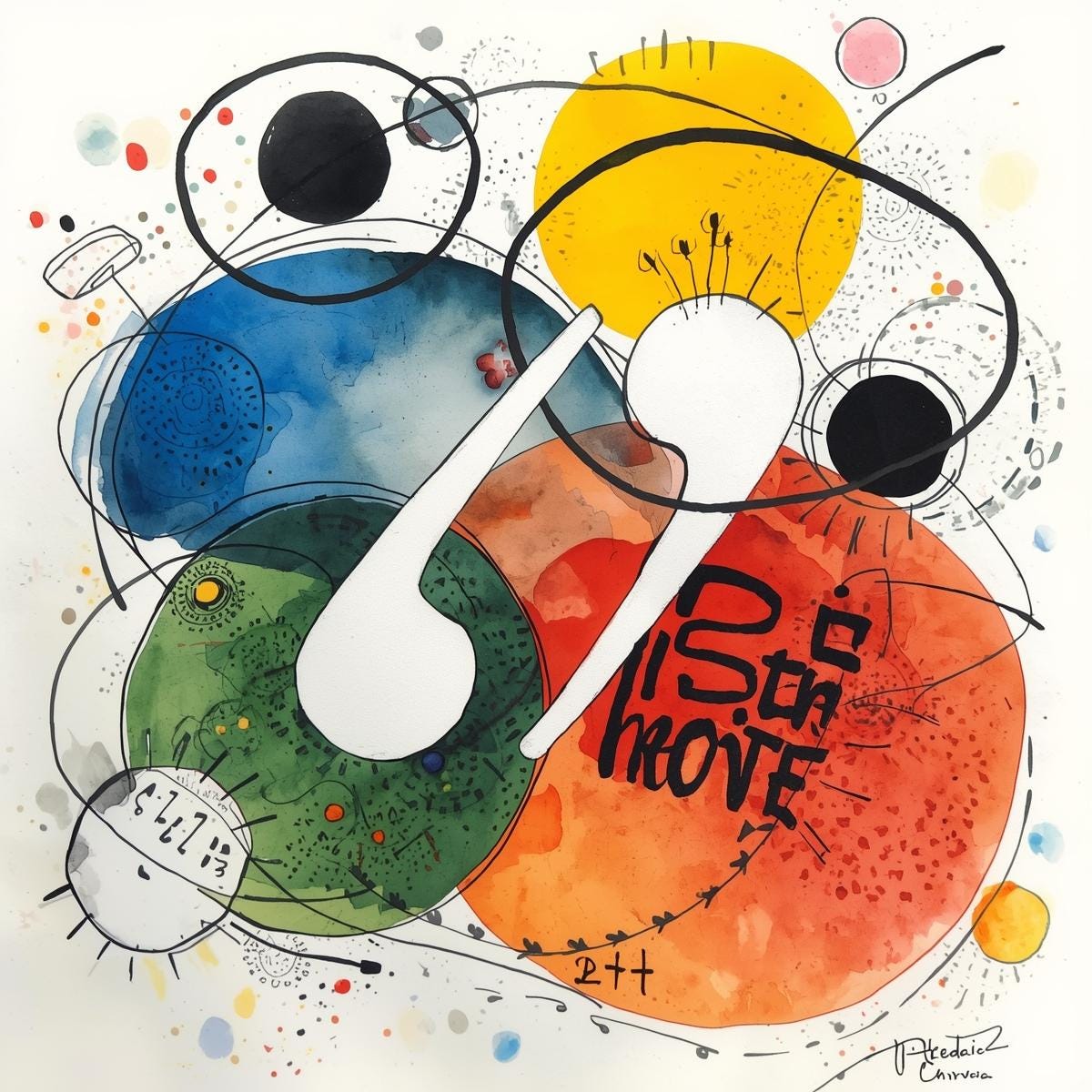Are You in a Midlife Crisis or a Semicolon Season?
Why the most powerful thing you can do right now is pause.
Period (.)
Some chapters end with a period. That doesn’t mean the story is over.
It happened on a Tuesday.
I was mid-breakdown in aisle 7 of Staples, clutching a pack of gel pens like they were emotional support animals, when I saw it, on a poster above the clearance shelf:
“Life is a semicolon; not a period.”
I laughed. Out loud. In public. Alone.
And that’s when everything changed.
Up until that point, I lived like a period.
Full stop. Finish the task.
Check the box. Move on.
I was a recovering perfectionist, addicted to productivity crack and overly invested in sentence structure as a metaphor for life.
You know the type: color-coded Google Calendar, breathless ambition, a knack for ending things cleanly.
I wanted clarity. Closure. Completion.
Ellipsis (...)
When life trails off, let it. The next line begins when you're ready.
Then life, being the cheeky editor it is, introduced chaos:
A breakup, a layoff, and a surprise diagnosis, all in one month.
My clean sentences got hijacked by commas of confusion and ellipses of existential dread…
Suddenly, the idea of a neat, final period felt violent.
Semicolon (;)
This could’ve ended; but it didn’t.
I didn’t want a full stop anymore.
I wanted pause with possibility.
Space to breathe and continue.
I wanted to become... a semicolon.
Why?
Because a semicolon says: This could’ve ended, but it didn’t.
It whispers resilience. It winks at reinvention.
Comma (,)
Take a breath. Life continues after the pause.
But becoming a semicolon is harder than it looks.
First, you have to stop pretending you’re a bullet point.
Then, you have to survive all the commas: grief, guilt, gaslighting.
People kept asking, “What’s next?”
And I’d respond, “I’m in a semicolon season.”
Which they thought meant “midlife crisis,” but really meant: I’m still here.
Colon (:)
What comes next might just surprise you:
One night, I was about to quit writing—again.
The blinking cursor mocked me like a judgmental ex.
So I made a deal with myself:
No perfect paragraphs. No profound conclusions.
Just... one sentence.
And I ended it with a semicolon:
Not to be clever.
But because I was not done.
Parentheses ( )
(Not everything needs to be loud to matter.)
Since then, my life’s become a wild punctuation party.
Some days I’m an exclamation mark (!) too enthusiastic for my own good.
Other days, a set of parentheses (whispering soft truths to myself).
I’ve learned to dance with dashes (—) and befriend the ellipsis (…).
But mostly, I’m a semicolon; gracefully unfinished.
Underscore (_)
Still becoming. Still becoming. Still becoming.
I didn’t get the closure I once craved.
But I got something better:
A pause that honors the chaos.
A breath before the next clause.
And permission to write a life that’s messy, layered, and still in motion.
No bow. No final chapter. Just an underscore for what’s still becoming.
Ampersand (&)
You are allowed to be both healing & growing, breaking & blooming.
We all have semicolon moments.
The heartbreak that taught you how to rebuild.
The diagnosis that made you redefine what thriving means.
The project that flopped—and still opened a better door.
Life is punctuation.
Messy, imperfect, full of edits.
And: it continues.
Question Mark (?)
What if this isn't the end, but the middle of a better sentence?
So if you're dangling mid-sentence,
if your life feels like a draft with too many edits
don’t rush to wrap it up.
Maybe you’re just at the semicolon;
And the next line is still being written.
PS: My writing is powered by coffee in the morning and tea in the afternoon. To keep the words flowing, consider contributing to my caffeine fund.
👉 If you enjoy reading this post, feel free to share it with friends! Or feel free to click the ❤️ button on this post so more people can discover it on Substack.



Marvelous, Magdalena! Thank you for this one—I thoroughly appreciated it.
Only one word to describe this post, Magdalena: delicious!
My life is happy question marks. By which I mean that I love the questions; I no longer look for any answers.